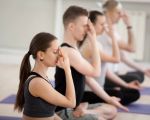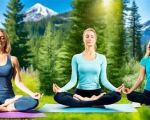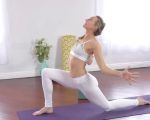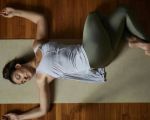- 1-Understanding-Anxiety-and-Stress
- 2-The-Science-Behind-Yoga-for-Stress-Relief
- 3-Core-Yoga-Poses-for-Anxiety-Relief
- 4-Breathing-Techniques-to-Calm-the-Mind
- 5-Mindfulness-Meditation-in-Yoga-Practice
- 6-Personal-Case-Study-of-Yoga-Transformation
- 7-Integrating-Yoga-into-Daily-Life
Understanding Anxiety and Stress
Defining the Modern Epidemic
Anxiety and stress affect millions worldwide, manifesting as racing thoughts, muscle tension, and disrupted sleep. Chronic stress triggers a constant “fight-or-flight” response, flooding the body with cortisol and adrenaline. Over time, this imbalance contributes to digestive issues, weakened immunity, and mental health disorders. Recognizing anxiety and stress as physiological and psychological processes is the first step toward effective management through yoga.
How Stress Impacts Daily Function
When we’re stressed, our prefrontal cortex—responsible for decision-making—shrinks, while the amygdala, the brain’s alarm center, becomes hyperactive. This shift can make simple tasks feel overwhelming and emotional regulation difficult. By understanding these neural mechanisms, practitioners can appreciate how yoga’s combination of movement, breath, and mindfulness helps restore balance to both mind and body.
The Science Behind Yoga for Stress Relief
Neurochemical Benefits of Practice
Research shows that regular yoga elevates gamma-aminobutyric acid (GABA), a neurotransmitter that reduces neuronal excitability and promotes calm. Studies at Boston University found a 27% increase in GABA levels after a single yoga session, comparable to low-dose anti-anxiety medication. Yoga also stimulates vagal tone, enhancing parasympathetic (“rest-and-digest”) activity and lowering heart rate and blood pressure.
Hormonal Regulation Through Movement
Dynamic sequences like Sun Salutations mobilize muscle groups and trigger endorphin release—natural painkillers and mood stabilizers. Long holds in restorative poses reduce cortisol, the primary stress hormone. Over weeks of consistent practice, these hormonal shifts accumulate, leading to greater resilience against daily stressors.
Core Yoga Poses for Anxiety Relief
Child’s Pose (Balasana)
Child’s Pose gently compresses the abdomen, stimulating the vagus nerve and signaling safety to the brain. To practice, kneel on the mat, open your knees, and fold forward, extending your arms or resting them alongside your body. Hold for one to three minutes, breathing deeply into your lower back. This pose grounds you, offering a pause when anxiety peaks.
Legs-Up-the-Wall (Viparita Karani)
Elevating the legs reverses blood flow, reducing swelling and calming the nervous system. Sit sideways against a wall, then swing your legs up as you lower your torso. Place a folded blanket under your hips for comfort. Remain here for five to ten minutes, focusing on soft, even breathing. Many practitioners report a noticeable drop in heart rate and a sense of mental clarity.
Supported Bridge Pose (Setu Bandha Sarvangasana)
Bridge Pose opens the chest and throat—areas that tense during stress. Lie on your back with knees bent, feet hip-width apart. Place a block under your sacrum and let your torso rest. Clasp your hands beneath you or rest arms to the sides. Hold for up to five minutes, breathing into the expansion of the ribs. This gentle backbend counteracts hunching and helps release stored tension.
Breathing Techniques to Calm the Mind
Alternate Nostril Breathing (Nadi Shodhana)
Nadi Shodhana balances left and right hemispheres of the brain, harmonizing emotional states. Use your right thumb to close the right nostril and inhale through the left, then close the left with your ring finger and exhale through the right. Continue for two to five minutes, maintaining slow, smooth inhales and exhales. Practitioners note improved focus and reduced mental chatter.
4-7-8 Method
Popularized by Dr. Andrew Weil, this technique promotes parasympathetic activation. Inhale quietly through the nose for a count of four, hold for seven, then exhale audibly through the mouth for eight. Repeat four cycles. The extended exhale engages the vagus nerve, reducing anxiety and preparing the body for restful sleep.
Mindfulness Meditation in Yoga Practice
Anchor Points for Present-Moment Awareness
Integrating mindfulness into asana practice magnifies its stress-relieving benefits. Choose an anchor—your breath, the sensation of feet on the mat, or ambient sounds. Each time your mind wanders, gently return to this anchor. This practice rewires habit loops of rumination, teaching the brain to disengage from anxious thought patterns during both yoga and daily life.
Body Scan Meditation
After your physical practice, lie supine and mentally scan from toes to crown. Notice areas of tightness or warmth without judgment. Spend ten to fifteen seconds on each region, breathing into sensations. This deep relaxation method highlights residual tension, inviting conscious release and profound serenity.
Personal Case Study of Yoga Transformation
Facing Acute Workplace Anxiety
Sarah, a marketing manager, experienced panic attacks during presentations. After six weeks of daily 20-minute morning yoga—combining Child’s Pose, Bridge Pose, and 4-7-8 breathing—her public speaking anxiety decreased by 60% on self-assessment scales. She credits the combination of hip-openers and pranayama with releasing trapped nervous energy and boosting confidence.
Building Sustainable Habits
Sarah’s routine evolved: she added a weekly Yin Yoga class focused on long holds and introspective journaling. Connecting with a supportive community reinforced her commitment, showing how personalized sequences and peer encouragement fuel sustained progress in overcoming anxiety and stress through yoga.
Integrating Yoga into Daily Life
Creating a Manageable Practice Schedule
Begin with short sessions—10 to 15 minutes—at consistent times, such as upon waking or before bed. Use digital reminders or habit-tracking apps to maintain momentum. Gradually expand your practice as you notice tangible mood improvements, transitioning from quick flows to more restorative routines on busier days.
Leveraging Free Online Resources
For guided classes and pose libraries, explore Free Yoga Links. Their curated platform offers sequences specifically designed for anxiety reduction, stress relief, and mindfulness. Whether you need a five-minute breathing break at work or a 60-minute deep-stretch session at home, Free Yoga Links provides accessible, expert-led content to support your journey toward emotional balance.








